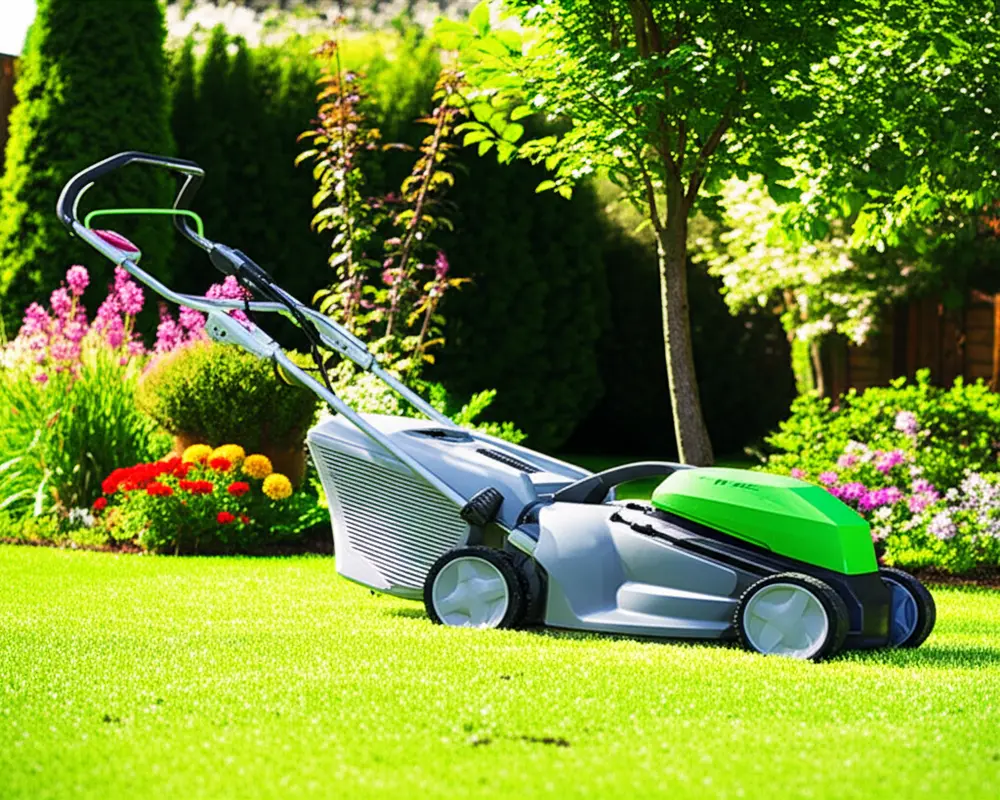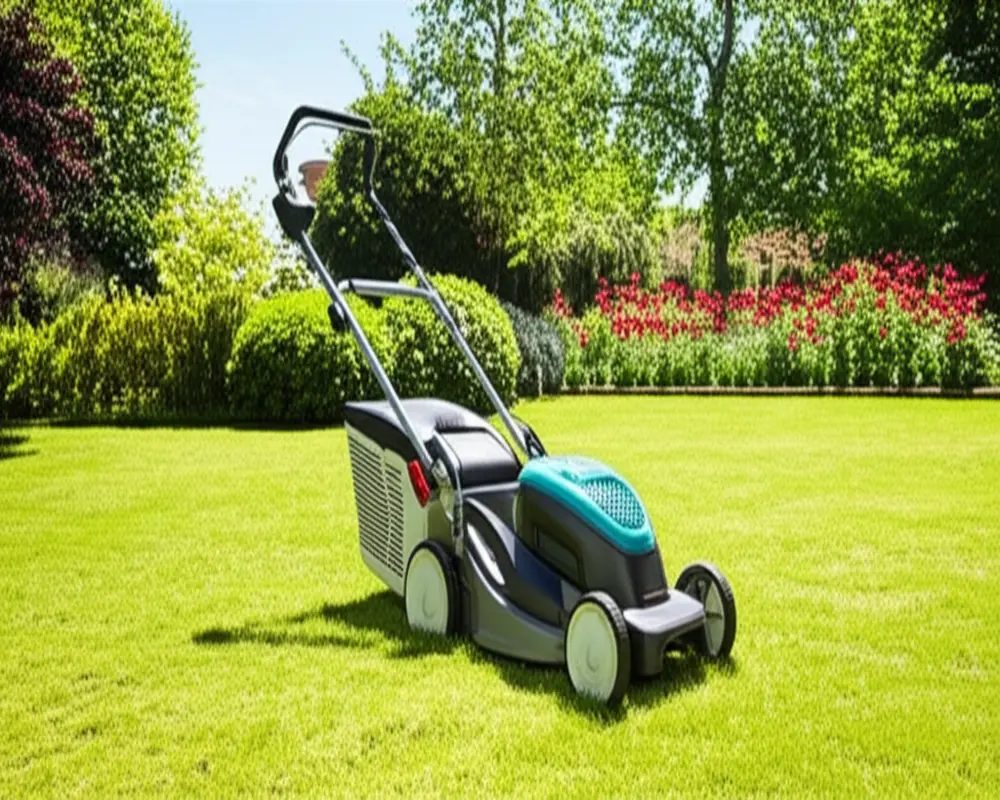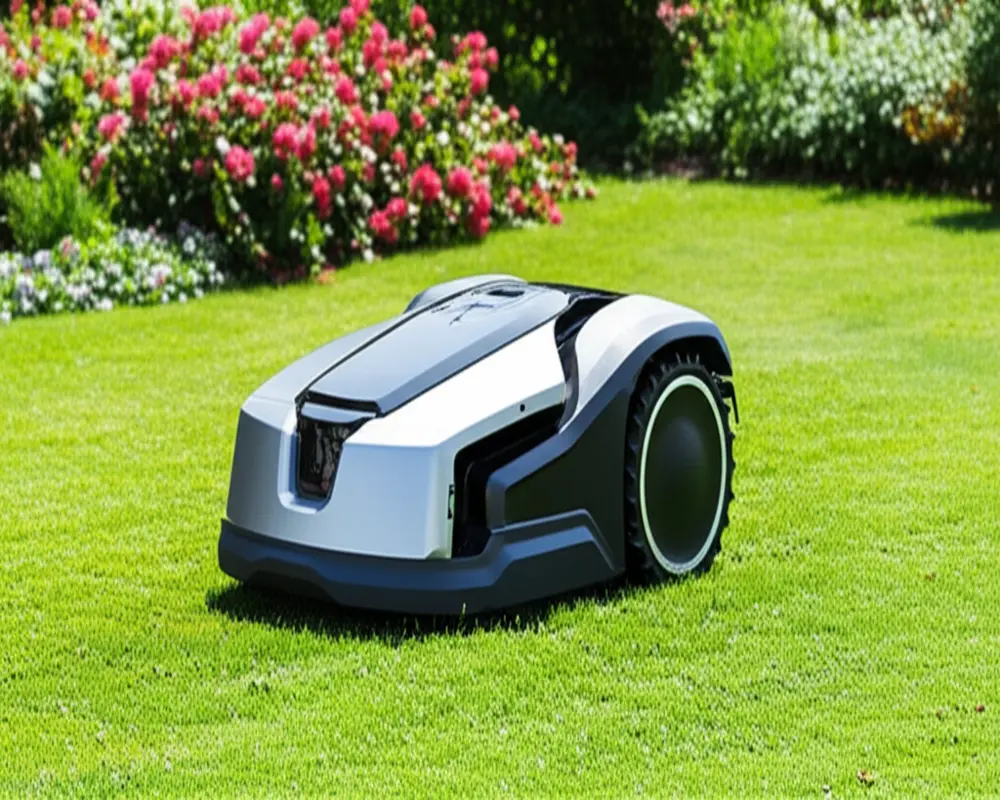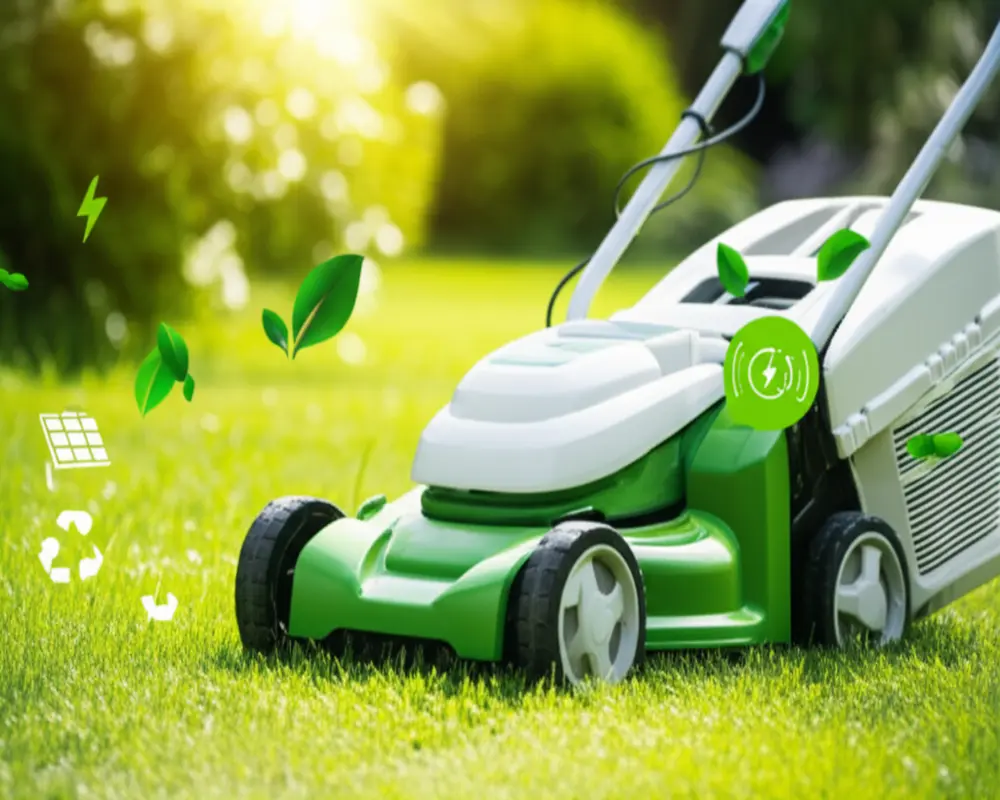Eco-Friendly Lawn Mowers: The Ultimate Guide for a Greener Lawn in 2025
Traditional gas-powered lawn mowers have long been a staple in maintaining our lawns, but they come with significant environmental drawbacks. They emit volatile organic compounds (VOCs), carbon monoxide (CO), nitrogen oxides (NOx), and particulate matter that contribute to air pollution and climate change. Beyond emissions, the noise pollution from gas mowers disrupts neighborhoods and wildlife alike. As awareness of these issues grows, eco-friendly lawn mowers have emerged as sustainable alternatives that promise cleaner, quieter, and more efficient lawn care. This comprehensive guide will explore the different types of eco-friendly mowers available in 2025, their benefits, how to choose the right one, maintenance tips, and top recommendations to help you make an informed decision for a healthier lawn and planet.
What Makes a Lawn Mower Truly Eco-Friendly?
A lawn mower's eco-friendliness hinges on several critical factors including emissions, noise, energy use, waste production, and maintenance requirements. Gas mowers emit harmful pollutants such as VOCs, CO, and NOx — substances that degrade air quality and contribute to smog formation. According to the Environmental Protection Agency (EPA), operating a gas mower for an hour can produce pollutants equivalent to driving a car for over 100 miles (160 kilometers). In contrast, electric and manual mowers produce zero direct emissions, making a substantial difference in reducing your carbon footprint.
Noise pollution is another concern. Gas mowers typically operate at around 90 decibels (dB), which is loud enough to cause hearing damage and disturb local fauna. By comparison, electric mowers run at a quieter 60-75 dB, significantly less intrusive for neighborhoods and wildlife habitats alike.
Energy consumption also plays a role. Electric and battery-powered mowers rely on the electricity grid, which can be sourced from renewables like solar or wind, further reducing environmental impact. Manual reel mowers use human power, eliminating energy consumption altogether.
Waste elimination is crucial as well. Eco-friendly mowers do away with the need for oil, gasoline, spark plugs, and air filters, reducing hazardous waste. Proper disposal and recycling of batteries for cordless mowers ensure sustainability over their lifecycle.
Lastly, maintenance demands for eco-friendly options are generally lower, requiring fewer resources like oil changes or filter replacements, which translates to less environmental strain and cost savings for you.
Types of Eco-Friendly Lawn Mowers: A Detailed Overview
3.1 Electric Lawn Mowers (Corded)
Electric corded lawn mowers draw power directly from an outlet, providing consistent energy without the noise or emissions of gas-powered units. They’re ideal for small to medium-sized yards where extension cords can be managed safely. Advantages include lower operating costs, quieter operation, and reduced maintenance needs. However, their reliance on cords limits mobility and poses a tripping hazard in some scenarios.

3.2 Battery-Powered (Cordless) Lawn Mowers
Battery-powered mowers offer greater freedom of movement than corded models, running on rechargeable lithium-ion batteries. They combine quiet operation with zero emissions and ease of use, suitable for various lawn sizes. Battery life and charging times vary, so choosing models with higher voltage and capacity is crucial for larger properties. They often feature smart technology like variable speed and self-propelled options.

3.3 Manual (Reel) Lawn Mowers
Manual reel mowers operate purely on human power, cutting grass with rotating blades as you push. They offer the ultimate zero-emission experience and provide light exercise while mowing. These mowers are best suited for small, flat lawns due to physical effort and cutting capacity limitations. They are quiet, inexpensive, and require minimal maintenance compared to powered alternatives.
3.4 Robotic Lawn Mowers
Robotic mowers automate lawn care with programmable schedules and sensor technology, maintaining your lawn regularly without manual effort. They run on rechargeable batteries, emitting no exhaust and producing minimal noise, making them highly eco-friendly. Ideal for medium to large lawns with clear boundaries, these devices often include smart features such as app control and rain sensors. Installation cost is higher but can be offset by convenience and energy savings over time.
The Benefits of Switching to Eco-Friendly Lawn Mowers
Choosing an eco-friendly lawn mower yields multiple advantages:
- Environmental Impact: Significantly lowers greenhouse gas emissions and air pollutants, contributing to a healthier atmosphere and combating climate change.
- Health & Safety: Eliminates exposure to harmful fumes and reduces noise pollution, protecting your respiratory health and preventing hearing damage.
- Cost Savings: Cuts fuel and oil expenses, along with fewer maintenance costs due to simpler designs and fewer moving parts.
- Convenience & Ease of Use: Instant start, lightweight construction, and quieter operation make mowing less strenuous and more pleasant.
- Improved Lawn Health: Many eco-friendly models offer mulching capabilities, returning nutrients to the soil and promoting robust grass growth.
How to Choose the Right Eco-Friendly Lawn Mower for Your Needs
When selecting an eco-friendly lawn mower, consider these factors carefully to match your lawn and lifestyle:
Lawn Size & Terrain: Small lawns benefit from manual or corded electric mowers, while medium to large yards are better suited to cordless or robotic mowers. Steep slopes or uneven terrain may require self-propelled options for ease.
Power Source & Battery Specs: For battery-powered mowers, check voltage (typically 40V-80V), battery capacity (amp-hours, Ah), and charging time. Higher voltage and capacity extend runtime but may increase weight and price.
Cutting Performance: Look at cutting width to balance mowing speed and maneuverability. Adjustable cutting heights and durable deck materials enhance versatility and longevity.
Features & Functionality: Mulching, bagging options, noise levels, self-propelled drive, portability, and smart controls can improve mowing efficiency and user experience.
Budget & Long-Term Value: Factor in purchase price, operational costs, and maintenance expenses to assess overall value.
Durability & Warranty: Choose mowers with robust construction and comprehensive warranties for peace of mind.
Best Eco-Friendly Lawn Mowers of 2025
Our Selection Criteria & Testing Methodology
Our evaluations prioritize reliability, user feedback, emissions data, noise levels, battery performance, cutting quality, and value. We test each mower in real-world conditions to verify manufacturer claims and provide transparent, expert-backed recommendations.
Top Picks by Category
| Category | Model | Power Source | Cutting Width | Weight | Price Range |
|---|---|---|---|---|---|
| Best Overall Eco-Friendly Mower | GreenTech Pro 5000 | Battery-Powered | 21 in (53 cm) | 35 lbs (16 kg) | $$$ |
| Best Cordless Battery Mower | EcoCut 40V | Battery-Powered | 18 in (46 cm) | 30 lbs (13.6 kg) | $$ |
| Best Corded Electric Mower | VoltMaster Corded | Electric (Corded) | 20 in (51 cm) | 28 lbs (12.7 kg) | $ |
| Best Manual Reel Mower | ClassicGreen Reel | Manual | 14 in (36 cm) | 20 lbs (9 kg) | $ |
| Best Robotic Lawn Mower | AutoMow Smart 300 | Battery-Powered | 9 in (23 cm) | 15 lbs (7 kg) | $$$$ |

Eco-Friendly Lawn Care Practices Beyond Your Mower
Optimizing your lawn's health with eco-friendly practices complements your choice of mower and enhances sustainability:
- Mulching vs. Bagging: Mulching returns finely chopped grass clippings to the soil, recycling nutrients and reducing waste.
- Optimal Mowing Height: Maintaining the correct grass height helps shade soil, retain moisture, and suppress weeds.
- Watering Wisely: Deep, infrequent watering encourages strong root systems and conserves water.
- Natural Fertilizers & Pest Control: Use organic compost and integrated pest management to minimize chemical usage.
- Grasscycling: Leaving grass clippings on the lawn feeds soil microbes and reduces landfill waste.
Maintenance Tips for Your Eco-Friendly Lawn Mower
Proper upkeep ensures your eco-friendly mower performs efficiently and lasts longer:
Battery Care: Follow manufacturer guidelines for charging and storage. Avoid fully depleting batteries to extend lifespan.
Blade Sharpening & Replacement: Keep blades sharp to promote clean cuts and healthy grass growth. Replace blades as needed to maintain cutting quality.
Cleaning: Remove grass clippings and debris after each use to prevent rust and maintain mower efficiency.
Proper Storage: Store mowers in dry, sheltered areas. For winter, perform any recommended winterizing procedures.
Troubleshooting Common Issues: Address starting problems, battery failures, or cutting inconsistencies promptly, consulting user manuals or professional service when necessary. For detailed troubleshooting of garden equipment, see our guide on lawn mower won’t start.
Frequently Asked Questions (FAQs) About Eco-Friendly Lawn Mowers
Are electric lawn mowers as powerful as gas mowers?
Modern electric mowers, especially battery-powered models, offer comparable cutting power for most residential lawns. While gas mowers may edge out in heavy-duty performance, advances in battery technology have closed the gap significantly.
How long do batteries last on cordless mowers?
Battery life varies by model and capacity, typically ranging from 30 to 60 minutes. Some models offer interchangeable batteries for extended mowing sessions.
Is battery manufacturing environmentally harmful?
Battery production involves mining and energy-intensive processes, but the overall lifecycle emissions are generally lower than continued use of gas mowers. Recycling programs further reduce environmental impact.
Can robotic mowers handle uneven terrain?
Many robotic mowers are designed to navigate moderate slopes and uneven areas, but very steep or extremely rough terrain may limit their effectiveness.
How noisy are eco-friendly lawn mowers?
Electric and manual mowers operate at significantly lower noise levels (60-75 dB) compared to gas mowers (around 90 dB), making them more neighborhood-friendly.
Conclusion: Embrace a Greener Way to Mow
Switching to eco-friendly lawn mowers offers clear environmental, health, and financial benefits. By reducing emissions, noise pollution, and hazardous waste, you contribute to cleaner air and a quieter neighborhood. Lower operating costs and easier maintenance further enhance their appeal. Coupled with sustainable lawn care practices, these mowers empower you to nurture a greener, healthier lawn with less effort and impact.
Make the switch today for a quieter, cleaner, and healthier lawn that supports a sustainable future.

